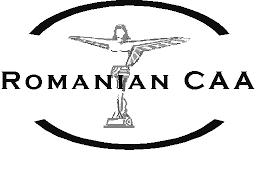ICAO PARIS (Regional Office for Europe and the North Atlantic area) celebrates 70 years of activity in August a.c.
The Regional Office for Europe and the North Atlantic Area (EUR / NAT) promotes and monitors the implementation of ICAO international aviation standards and best practices (SARPs) in 56 ICAO Member States (out of 191 Member States of the Convention). ). At the request of the States, the Regional Office for Europe and the North Atlantic Area (EUR / NAT) also provides training and technical guidance, a global regulatory reference to ensure safer, more efficient and greener aviation activities for Europe. and the North Atlantic.
The continuous development of civil aviation in Romania and the desire to make known internationally the results and performances obtained in this field, determined our country to accede in 1965 to the Convention on International Civil Aviation (ICAO), concluded on December 7, 1944 in Chicago, becoming, by Decree No. 194 of April 24, 1965, ICAO contracting state. This required the powers of the national aviation authority to be brought into line with the provisions of the Chicago Convention and its Annexes.
Over time, Romania has hosted several ICAO conferences in Bucharest. As a global forum for cooperation between Member States and the global aviation community, ICAO (International Civil Aviation Organization) issues standards and practices for the safe and orderly development of global civil aviation. There are currently over 10,000 such standards and provisions in ICAO annexes. The organization has set five strategic objectives for the period 2014-2016: to increase the safety of civil aviation worldwide; increasing the capacity and improving the efficiency of the civil aviation system; increase security and facilitate civil aviation worldwide; economic development of air transport; minimizing the adverse effects on the environment of civil aviation activities.
Among ICAO's current concerns are those regarding the approach of training the new generation of civil aviation professionals, so that they align with the requirements imposed by the evolution of future aviation technology.
One of the ICAO recommendations, which has been implemented by Member States since 2016, is to reduce monitoring time to 15 minutes for in-flight aircraft.
